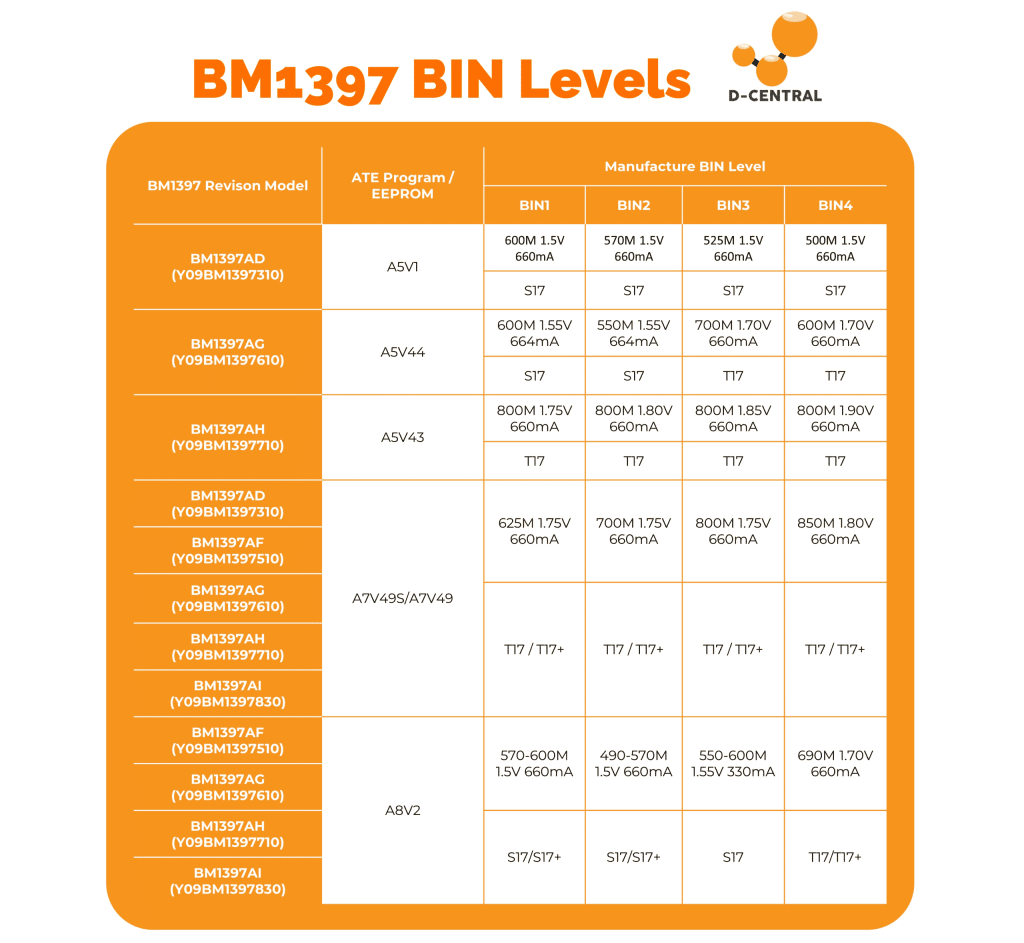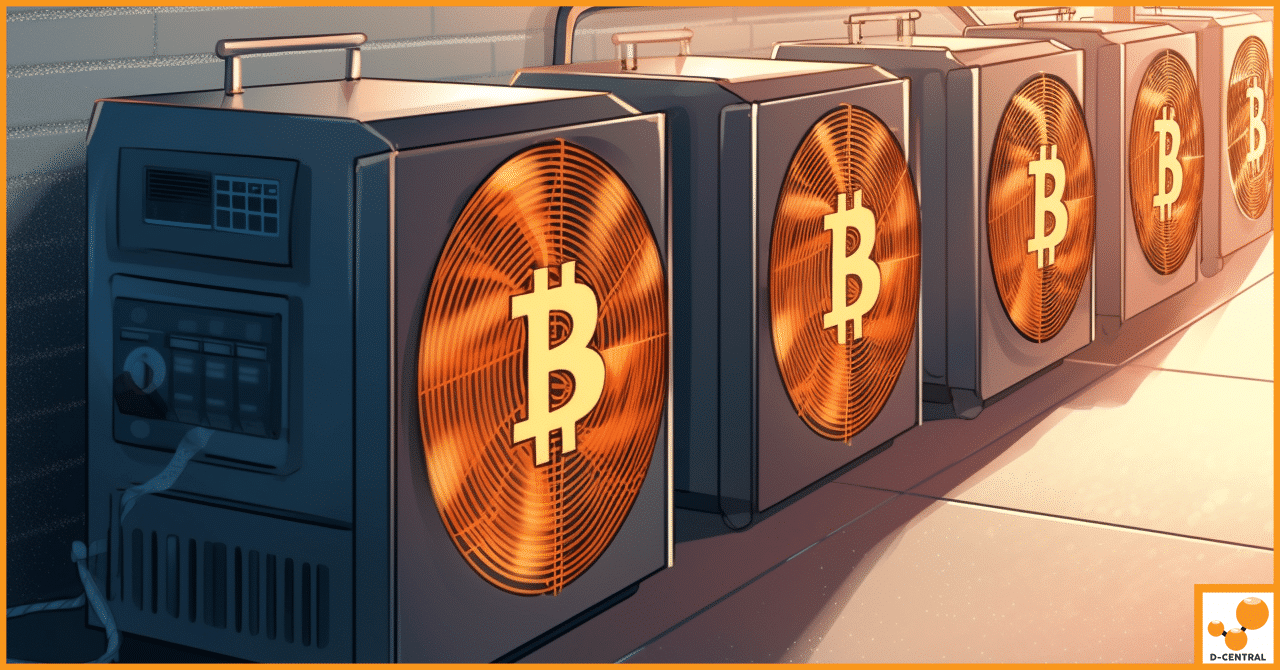
Breaking the Chains: How Pleb Mining and StratumV2 Combat Centralization
As Bitcoin continues to gain mainstream acceptance, the spotlight increasingly falls on the mining sector. Mining, the backbone of the
4479 Desserte Nord Autoroute 440, Laval, QC H7P 6E2

ASIC, or Application-Specific Integrated Circuit, represents a specialized microchip designed for a singular purpose. In the realm of Bitcoin mining, these chips are specifically engineered to efficiently process SHA-256 hashing algorithms, which are at the core of Bitcoin’s proof-of-work system. Unlike general-purpose hardware like CPUs, GPUs, and FPGAs, ASICs stand out for their exceptional processing power and energy efficiency, making them the most suitable option for Bitcoin mining. An ASIC miner comprises several integral components, including the ASIC chip itself, a robust power supply unit, an effective cooling system to manage the intense heat generated, and sophisticated control software to manage mining operations. These miners play a crucial role in maintaining and securing the Bitcoin blockchain, underpinning the network’s decentralized security model.
The design and manufacturing of ASIC chips are complex and resource-intensive processes. It begins with a detailed design phase, where the chip’s architecture is meticulously planned to optimize its performance for Bitcoin mining tasks. This phase involves a team of skilled engineers who specialize in microchip design, focusing on aspects like circuit design, power efficiency, and heat dissipation. Once the design is finalized, it moves into the manufacturing phase, which is typically outsourced to specialized semiconductor fabrication plants. These facilities use advanced lithography techniques to print the tiny circuits onto silicon wafers, a process that requires precision and state-of-the-art technology. The manufacturing process also involves rigorous testing to ensure each chip meets the required performance standards. Only after passing these tests are the chips assembled into mining units and made ready for deployment.
The efficiency and performance of ASIC miners are critical metrics that determine their viability and profitability in the competitive field of Bitcoin mining. Efficiency is primarily measured in terms of watts per gigahash (W/GH), which indicates how much electrical power the miner requires to perform a certain amount of computational work. The lower this number, the more efficient the miner. Performance, on the other hand, is gauged by the hash rate, typically expressed in terahashes per second (TH/s). This metric reflects the miner’s ability to compute and solve the cryptographic puzzles required in the mining process. Higher hash rates increase the likelihood of successfully mining a block and earning Bitcoin rewards. Over time, advancements in ASIC technology have continuously improved these metrics, leading to more powerful and energy-efficient miners. This evolution is a testament to the ongoing innovation in the field, driven by the ever-increasing demands of Bitcoin mining and the blockchain industry at large.
ASIC miners, given their intensive computational tasks, generate a considerable amount of heat during operation. This isn’t just a byproduct of the mining process; it’s a tell-tale sign of the energy being expended to solve the complex mathematical problems inherent in Bitcoin mining. Heat generation in itself isn’t an issue; instead, it’s the long-term and uninterrupted operation at high temperatures that can lead to problems.
When ASIC chips run for extended periods at elevated temperatures, their lifespan and efficiency can be compromised. Overheating can lead to chip failure or damage, significantly affecting your mining performance. It’s not an uncommon scenario for miners to push their equipment to its limits, seeking to maximize output.
With the Antminer 17 Series, Bitmain, a leading ASIC miner manufacturer, attempted to address the overheating issue by opting for tin between the heatsinks and chips. This approach aimed to enhance the chip’s ability to withstand high operating temperatures, thereby improving its overall lifespan. However, this design brought along its own set of challenges.
Specifically, the temperature differential between the cooling system and the ASIC chip can cause the tin to crumble. This crumbling results in the formation of small tin balls that can become lodged in the legs of the chips, creating short circuits and potentially causing permanent damage.
The need for replacement chips arises due to these operational issues. When it comes to the BM1397 chips used in the Antminer 17 Series, there are various models and revisions, each with its unique features and capabilities. Understanding these models and knowing which one can serve as an effective replacement is crucial for maintaining your miner’s performance and longevity.
The BM1397 chip series, developed by Bitmain, marks a significant milestone in ASIC mining technology. As a part of Bitmain’s continuous endeavor to innovate, the BM1397 series stands out for its remarkable efficiency and processing power in Bitcoin mining. These chips are specifically designed to tackle the SHA-256 algorithm used in Bitcoin’s blockchain, offering a blend of enhanced performance and reduced power consumption. The introduction of the BM1397 series has been a game-changer, setting new standards in the ASIC mining industry and solidifying Bitmain’s position as a leader in mining technology.
The BM1397 chips are engineered with cutting-edge semiconductor technology, featuring an advanced 7nm lithography process. This smaller chip size allows for a denser packing of transistors, leading to greater efficiency and speed. The chips are designed to operate at a lower voltage while maintaining a high hash rate, significantly reducing the power consumption per hash. This efficiency is crucial in mining operations where electricity costs can heavily impact profitability. The BM1397 chips also boast a robust thermal design, ensuring stable operation even under intensive workloads.
The BM1397 series includes several variants, each tailored to specific mining needs and operational conditions. The variants include:
Each variant of the BM1397 chip series brings its unique strengths to the table:
In summary, the BM1397 chip series from Bitmain is a testament to the rapid advancements in ASIC mining technology. Each variant is a result of meticulous engineering, designed to cater to the diverse needs of the Bitcoin mining community. Their collective contribution to the efficiency and effectiveness of mining operations cannot be overstated, making them a cornerstone in the world of cryptocurrency mining.
One of the most significant challenges in ASIC mining is managing the immense heat generated by the continuous and intensive computational processes. ASIC miners, especially those equipped with powerful chips like the BM1397 series, operate at high speeds, leading to substantial heat production. Effective thermal management is crucial to maintain optimal performance and prevent hardware damage. This involves a combination of advanced cooling solutions, such as air or liquid cooling systems, and efficient heat sink designs that dissipate heat away from the chips. Additionally, the mining environment’s ambient temperature plays a vital role in thermal management. Miners must ensure adequate ventilation and cooling in their mining setups to prevent overheating, which can lead to reduced efficiency, increased power consumption, and potential hardware failure.
ASIC miners are subject to wear and tear due to their continuous operation. Over time, components like fans, power supplies, and even the ASIC chips themselves can degrade. Regular maintenance is essential to ensure the longevity and efficiency of the mining hardware. This includes routine checks and cleaning to remove dust and debris, which can impede airflow and cooling efficiency. Replacing worn-out parts, such as fans and thermal paste, is also crucial to maintain optimal cooling and performance. Regular firmware updates and software maintenance are equally important to ensure the miner operates with the latest efficiency optimizations and security protocols.
Chip failure is a critical concern in ASIC mining, as it directly impacts the miner’s hash rate and overall productivity. Causes of chip failure can range from manufacturing defects and poor-quality materials to operational stresses like excessive heat, power surges, and unstable power supply. To prevent chip failure, miners should invest in high-quality mining hardware with robust build quality and reliable components. Implementing stable and clean power supplies, along with effective surge protection, can mitigate risks associated with electrical anomalies. Additionally, maintaining a controlled and stable mining environment with proper cooling and ventilation can significantly reduce the likelihood of chip failure due to thermal stress. Regular monitoring and diagnostics can also help in early detection of potential issues, allowing for timely intervention before a complete failure occurs.
While ASIC mining offers immense potential in terms of efficiency and profitability, it comes with its set of operational challenges. Addressing these challenges through effective thermal management, regular maintenance, and proactive measures to prevent chip failure is essential for sustaining long-term mining operations. By doing so, miners can ensure the reliability and longevity of their ASIC hardware, maximizing their investment in the competitive world of cryptocurrency mining.
ASIC chips, like the BM1397 series, are the workhorses of Bitcoin mining hardware, but they are not immune to wear and tear. The need to replace these chips typically arises under several circumstances:
Replacing ASIC chips is crucial to maintain optimal mining performance and to extend the lifespan of the mining hardware.
Choosing the correct variant of the BM1397 chip is essential for compatibility and performance optimization:

Replacing ASIC chips like the BM1397 series requires precision and a good understanding of electronics. If you’re not confident in performing the replacement yourself, it’s advisable to seek professional assistance. Proper replacement not only restores the miner to its optimal performance but also prevents potential damage that can arise from incorrect installation.
The future of Bitcoin mining appears to be on a trajectory of continuous innovation and technological advancement. The evolution of ASIC miners, particularly with the development of more efficient and powerful chips like the BM1397 series, is a testament to the industry’s commitment to optimizing Bitcoin mining operations. As we look ahead, we can expect further advancements in chip technology, focusing on energy efficiency and computational power. The trend towards more sustainable and environmentally friendly mining practices is likely to gain momentum, aligning with global energy concerns. Additionally, the decentralization of mining operations and the emergence of new players in the market could lead to a more democratized mining landscape. Overall, the future of Bitcoin mining is poised to be an exciting blend of technological progress, environmental consciousness, and community involvement.
For individuals and organizations involved in Bitcoin mining, staying updated with the latest advancements in ASIC technology is crucial. Regular maintenance and timely upgrades of mining equipment are essential for maximizing efficiency and profitability. Embracing new trends, such as sustainable mining practices and exploring renewable energy sources, can also contribute to a more positive and responsible mining ecosystem. As the industry evolves, miners should remain adaptable, continuously seeking knowledge and embracing innovations that enhance their mining operations.
D-Central Technologies stands as a prominent player in the Bitcoin mining industry, known for its expertise and comprehensive solutions. As a leader in the field, D-Central offers a range of services and products tailored to the needs of both novice and experienced miners.
D-Central specializes in providing high-quality ASIC miners, including the latest models equipped with advanced BM1397 chips. Their services extend beyond sales, encompassing miner hosting, maintenance, and repair services. D-Central also offers consultancy services, helping clients optimize their mining operations and navigate the complexities of the cryptocurrency mining landscape.
At the core of D-Central’s philosophy is a steadfast commitment to innovation and quality. The company continuously seeks to adopt the latest technologies and practices in the field, ensuring that their clients have access to the most efficient and effective mining solutions. Their focus on quality is evident in their product offerings, customer service, and technical support, making D-Central a trusted and reliable partner in the Bitcoin mining industry.
In conclusion, as Bitcoin mining continues to evolve, D-Central Technologies remains dedicated to providing cutting-edge solutions and expert guidance to its clients. Their commitment to innovation, quality, and customer satisfaction positions them as a key contributor to the future of Bitcoin mining.
What is an ASIC miner?
An ASIC miner is a specialized microchip designed for a singular purpose, and in the context of Bitcoin mining, it is engineered to efficiently process SHA-256 hashing algorithms which are key to Bitcoin’s proof-of-work system.
How are ASIC chips for Bitcoin mining manufactured?
The manufacturing of ASIC chips is complex, starting with a detailed design phase focused on optimizing performance for Bitcoin mining tasks, followed by a manufacturing phase where advanced lithography techniques are used in specialized semiconductor fabrication plants.
Why is efficiency and performance important in ASIC miners?
Efficiency, measured in watts per gigahash (W/GH), and performance, gauged by the hash rate in terahashes per second (TH/s), are vital metrics in ASIC miners that determine their profitability and viability in the competitive field of Bitcoin mining.
What causes the need for replacement BM1397 chips in miners?
The need for replacement BM1397 chips arises due to overheating, chip failures, electrical issues, and physical damage which can significantly affect mining performance.
What makes the BM1397 chip series special?
The BM1397 chip series, developed by Bitmain, is advanced due to its use of a 7nm lithography process, leading to efficient and powerful performance in Bitcoin mining.
Can you describe the variants of the BM1397 chip series?
The BM1397 chip series includes variants such as BM1397AD, BM1397AF, BM1397AG, BM1397AH, and BM1397AI, each designed for specific mining conditions and operational requirements.
How can one address the operational challenges in ASIC mining?
Addressing operational challenges in ASIC mining involves effective thermal management, regular maintenance, and proactive measures to prevent chip failure in order to maintain long-term mining operations.
What steps should you follow to replace BM1397 chips?
Replacing BM1397 chips involves selecting the right chip for your miner, safety precautions, disassembling the miner, locating and removing the old chip, installing the new chip, reassembling the miner, and testing to ensure performance is restored.
What is the future outlook for Bitcoin mining?
The future of Bitcoin mining is expected to see continuous innovation in ASIC technology, focusing on energy efficiency, computational power, sustainable practices, and a more democratized mining landscape.
What services does D-Central Technologies offer?
D-Central Technologies offers services including the provision of high-quality ASIC miners equipped with advanced chips, miner hosting, maintenance, repair services, and consultancy to optimize mining operations.
DISCLAIMER: D-Central Technologies and its associated content, including this blog, do not serve as financial advisors or official investment advisors. The insights and opinions shared here or by any guests featured in our content are provided purely for informational and educational purposes. Such communications should not be interpreted as financial, investment, legal, tax, or any form of specific advice. We are committed to advancing the knowledge and understanding of Bitcoin and its potential impact on society. However, we urge our community to proceed with caution and informed judgment in all related endeavors.
Related Posts

As Bitcoin continues to gain mainstream acceptance, the spotlight increasingly falls on the mining sector. Mining, the backbone of the

Navigating crucial environmental considerations can be perceived as a complex task, particularly within sectors reputed for considerable energy consumption, such

Artists and craftsmen working in studios or workshops are well aware of the financial burden that comes with maintaining a